Updated: 16-Jun-2021
Together with Mitsubishi they were the main suppliers of aviation engines in Japan during WWII.

“Nakajima logo”
-Nakajima Hikoki Kabushiki Kaisha, began its activity in 1917 as the Chikuei Nakajima, changing its name to Nakajima Aircraft Co. in 1931.
-After WWII the company emerged again as Fuji Heavy Industries (see).
-They started building licensed engines, the 450 CV Lorraine and the 450 CV Bristol Jupiter VI, (years 1928-29).
-The "Kotobuki" 9-cylinder radial was derived from the Jupiter. Kotobuki in Japanese is "Congratulations" in English.
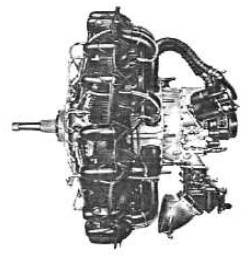
“Nakajima Kotobuki 1Ka-1”
-Other Kotobuki models were:
-the Ha-1 from 450 to 785 CV.
-the Ha-1b of 710 CV.
-the Ha-41 as the improved Ha-1.
-2Ka-11 of 580 CV.
-2Ka-12 of 580 CV.
-5, 550 CV with gearbox.
-3, 720 CV.
-the 2Kai of 580 CV, etc.
-The “Hikari” (Splendor), with 9 radial cylinders, of which the following were the most common:
-Ha-5 of 950/1080 CV.
-Ha-8 of 700/840 CV.
-Ha-20 of 730/820 CV.
-Ha-26 of 900 CV.
-Ha-20b of 820 CV. etc.
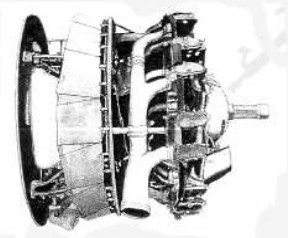
“Hikari” (¿Hikori?)
-The "Sakae" (Prosperity), were 14-cylinde, double-row radials (NK1):
-The Ha-25 of 950/1000 CV.
-Ha-102, Ha-105.
-Ha-115 of 1130 CV at the “Oscar”.
-Ha-109 of 1500 CV.
-Ha-34 of 1300/1500 CV.
-Ha-41 of 1260 CV, in the “Helen”, etc.
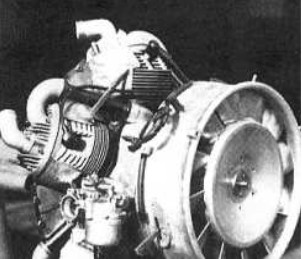
“Sakae 12 (NK1C)”
-The letters “Ha” correspond to “Engine”.
-The name Nakajima is "NK" and the identification of the Japanese Army was "Type".
-Thus, the same Sakae engine was known for:
Type 11 = NK1B of 1000 CV.
-Type 12 = 940 CV NK1C.
-Type 121 = NK1F of 930/1120 CV in the “Zeke”.
-Type 32 = NK1P of 1130 CV.
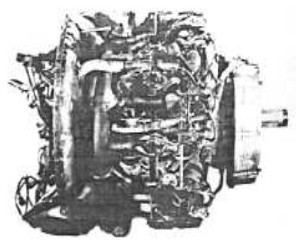
“Sakae, Ha-115 = Type 1”
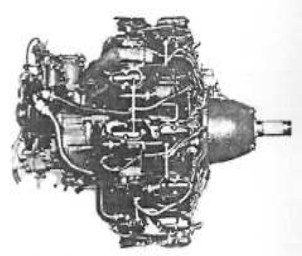
“Sakae 21 (NK1F)”
-For example, the Sakae 21 was the NK1F and later known as -21 and Ha-35.
-It powered the Mitsubishi A6M5, the famous "Zero" fighter.
-It is known that the Sakae 21 with 1000 CV and 14 cylinders in double row was a copy of the Gnome-Rhone K4.
-An engine of these can be admired at the Hendon Museum, in England.
-The “Homare” (Honor) engines were 18-cylinder, double-row radials.
-These engines were also used on the "Zero" and the "George". They had the same Sakae cylinders.
-Some Homare engines are:
-Homare 2-1 and version 5-2, with supercharger.
-Homare NK9H = Type 21 from 1990 CV.
-Homare NK9K = Type 24 of 2000 CV.
-Homare NK9B = Type 11 of 1820 CV.
-Homare NK9C = Type 12 of 1825 CV. etc.
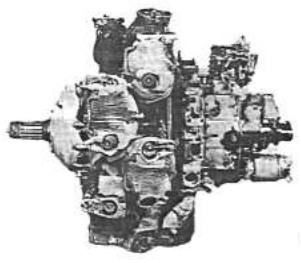
"Remains of a Type 2 = Ha-109"
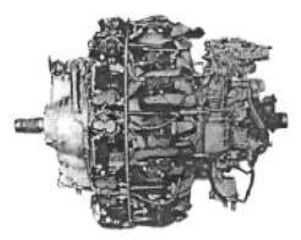
“Homare 11”
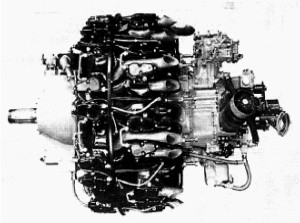
“Homare 21”
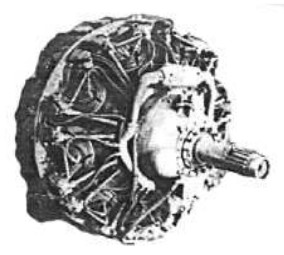
“Homare 22”
-The “Mamoru” (Protector), were 18-cylinder double-row radials whose cylinders were also based on those of the Sakae but larger. They are the NK7.
-The NK7A (Type 11, 1870 CV).
-The Ha-117 giving 2420 CV, etc.
-Other engines identified by the Japanese Navy Type number are Type-1 or Ha-115 and renamed 35, as mentioned above.
-The Type-2 or Ha-109 and renamed Ha-34, gave 1,450 CV on the Tojo 2.
-Type 95 gave 350 CV. Type 98 or Ha-9-11b gave 850/950 CV.
-Several more Nakajima families are known, for example the Ha-46 and Ha-217, which delivered 3,000 CV and the massive Ha-505, which were four 9-cylinder radials giving 5,000 CV.
-Other Nakajima engines, of which we cannot give more news are the "Showa" and the "Fugaba".
-In the field of turbojets Nakajima together with IHI (Ishikawajima Harima Industries) made the Ne-12 that delivered 340 Kgf of thrust. The Ne-20 with 475 Kgf. The Ne-20-kai with 618 Kgf.
-The Ne-30 with 850 Kgf, and the Ne-33 with 1,320 Kgs.
-At the end of the war there were three more projects, the Ne-130 that gave 900 kgf of thrust, the Ne-230 with 885 kgf and the Ne-330 with 1,300 kgf of thrust.

“Ne-20”
-Nakajima was responsible for motorizing the Japanese Kikka or Me262 in 1945.
-Their engines were based on the BMW-003 but at 3/4 size. Also at the Mitaki and Ogikubo factories the manufacture of the Ne-230 had begun (together with Hitachi)). At the arrival of the Americans, manufactured parts of these engines were found.
From Appendix 6: We expand the main text illustrations with new ones from the Pima Air Museum in the United States.
-They are the engines used by the Zero and Kate aircraft. These engines are known as the Nakajima Sakae. First a frontal photograph.

“Sakae (Prosperidad), front view” (PiP)

“Sakae, rear view”
-It is well known that the Sakae is based on the Gnome-Rhone K14 (see), but in the Pima Air Museum it is mentioned that the Type NK1C is a derivative (re-engineered) of the Pratt & Whitney R-1830.
-All radials look alike but you just have to compare the construction details.
-And the rocker rods together at the foot of the block do not admit doubts.
-The 14-cylinder Sakae NK1C, displaced 1,700 cu. in. and it gave 1,020 CV at 2,000 rpm.
-Another engine at the same museum is the 18-cylinder Nakajima NK9K-S, called Homare 22.
-It had a displacement of 1940 cu. in. and delivered 2,000 CV. It was installed on Mitsubishi Reppu and Aichi Denko aircraft.
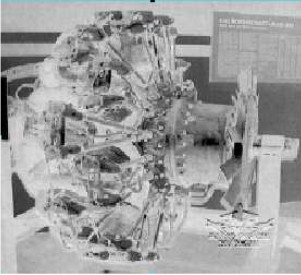
“Nakajima Homare 22” (PiP)
-A Nakajima inverted 12-cylinder (in V?) Diesel engine, model NAT-1, is known.
-At the NASM there is information under the reference BD200150-80. It has been requested.
On a visit to the Smithsonian Museum's engine warehouses during the 2010 AEHS Convention, several Nakajima engines from the WWII period could be seen.
-Apart from the exhibition that is open to the public, there are two engine warehouses, not so well exposed -but much more interesting- in the so-called Udvar-Hazy and Paul-Garber spaces.

“Nakajima Army Ha-145”
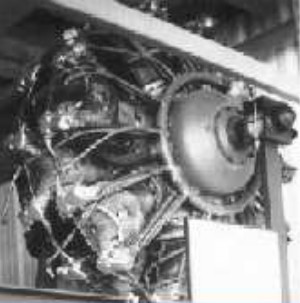
“Nakajima Type 2, Ha-34, Model 2 (Ha-109)”
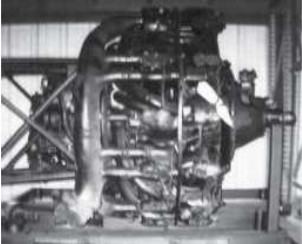
“Nakajima Mamoru 11”

“Nakajima Homare 12, Ha-45. Model 12”
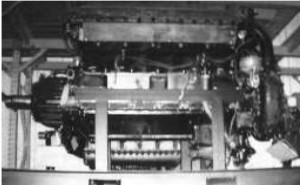
“Unknown Nakajima Ha-15 or Ha-39”
-In the photograph obtained by an AEHS member, it is not perfectly distinguished if the engine is a V, although it may look like a Y.
-After much observation, the belief is that behind there is another engine that confuses the lines of the former.
-More details from the readers will be appreciated, although well thought out is a good excuse to travel to Washington.

“Nakajima Homare 12, Ha-45. Modelo 12”
-I was going to forget the rear view of this Homare that also appears above.
From Appendix 9: There is a reference by Rob Hawhinney (NASM Curator and AEHS member) of two engines hardly known for their characteristics, of this brand.
-One is the Homare Ha51-01, a double-row radial with no less than 22 cylinders, that is, with two rows of 11 cylinders each, nothing common at least at the level of WWII. There were made 11-cylinder radial engines in the First World War.
-Although in the documentation and data it is mentioned that only three engines were made that did not work properly and another engine was in the manufacturing process when the factory was destroyed by American bombers.
-The engine dates from 1942 to 1945. The remains of one of these have been discovered in the museum near Narita airport (Tokyo).
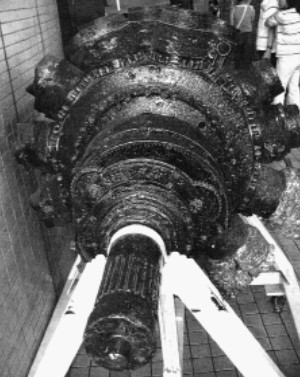
“Remains of a Nakajima Ha51-01”
-In the data received from Rob it is mentioned that this Homare was built by Hitachi), specialized in the construction of light aviation engines such as the Hamakaze (Walter HM-504). Which is rare.

"Side view of the same engine"
-It was planned for 2,450 CV, and it had a 1-step, 2-speed supercharger. It was geared and had a centrifugal clutch. It was considered to be derived from the Ha-45 with a forced air fan.
-The other engine was a spectacular 36-cylinder four-row radial (9x4). It was the Ha54-01 “Kotobuki” based on the Ha219 (Ha44-12).
-The Ha54-01 was planned for 5,000 CV and 4,500 CV at 9,000 meters altitude.
-We have new illustrations of engines built by Nakajima before and during WWII.
-The first is the Jupiter (Bristol license) that appears with a sharper image.

“Nakajima Jupiter”
-And the Nakajima Homare 21.

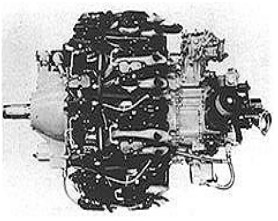
“Nakajima Homare 21”
-The Tokyo factory (Ogikobo) started with Lorraine and Bristol licenses. The “Sakae” radial of the “Zero” fighter is its most famous product.
The Kotobuki was based on the Jupiter and was derived from the first NAH 9-cylinder radial.

“Nakajima Kotobuki I”
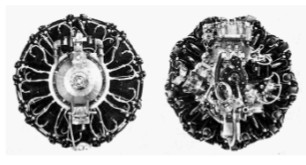
“Two views of the Homare -21”
-The Wright Cyclone was made under license as E-14.

“Nakajima E-14 (Wright-Cyclone)”
-Regarding turbines, the first turbojets were the TR-10 and TR-12 (and TR-12b). In English the name TR comes from Turbin Rocket, we suppose that in Japanese it was not like that. (?).
-The first was the TR-10 which was built around 1943 with low compressor efficiency. The TR-12 had a mixed compressor with four axial stages and the centrifugal one behind it.

“Nakajima TR-12b”
-The TR-12b was a refinement and a lighter version of the -12. These engines were abandoned near the end of WWII. The Ne-20 was the first operating engine of this brand.

“Ne-20 cross-section”
-We received information from the Tokorozawa museum, via Talo Shi. With this information there are new photographs of the brand's radial engines.
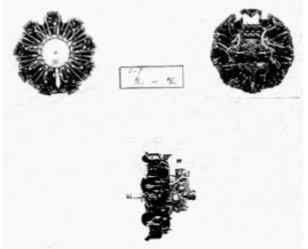
“Nakajima C-9”

“Nakajima C-17”

“Nakajima D-22”
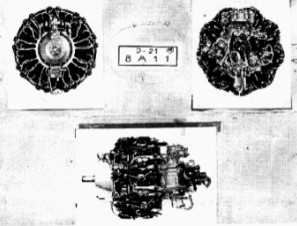
“Nakajima D-21”
-Below we show the "Sakae" version C-25, with photographs left in the archives of Fuji Heavy Industries, FHI (their heir).
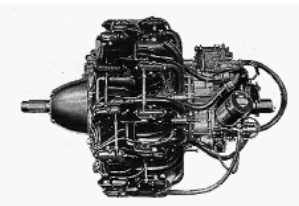
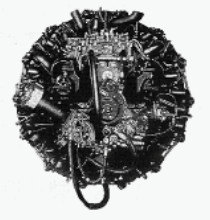
“El Sakae C-25”
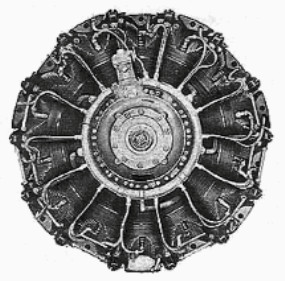
“Nakajima Sakae 25, frontal”
-The author has always received news that the 14-cylinder Sakae was a copy of the 14-cylinder Gnome-Rhone as well. It may be derivative but the front row has the rods in front and the rear one behind, that is, the cam plates are on both sides, which does not happen in the G-R.

“Nakajima Homare (Honor), -21”
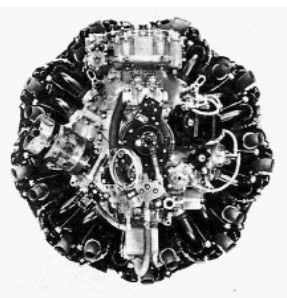
"Rear view of the same Homare"
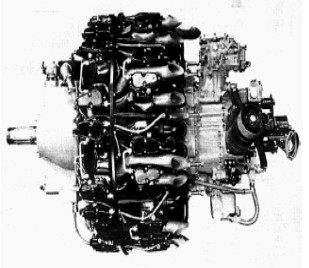
“And also a side view”
-We received two photographs of the Homare exhibited at the Osaka museum (PiP).
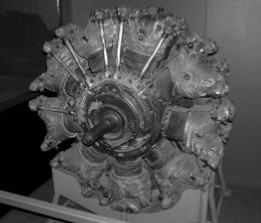
“Radial Nakajima Homare”
-It is the model or type Ha-45. By its corroded appearance on the ferrous and aluminum parts, it must have spent a long time under water.
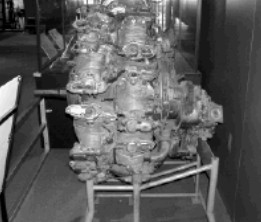
"Side view of the same engine"
-With 18 cylinders in double row it was in the category of 2,000 CV.
-The 94 model is a 450 CV one-row radial from 1935.
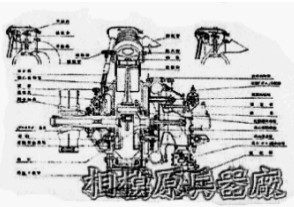
“Nakajima model 94, 450 CV”
-Below we show a new list of engines located directly from Japan via Talo Shi.

“Nakajima C-11, ¿Honra? ¿Honor-Homare?”
-Double-row radial engine, the Nakajima C-11.
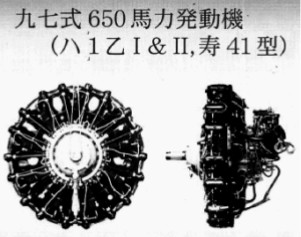
“Nakajima Kotobuki tipo 41”
The Nakajima Kotobuki with 650 CV was the base of Type-41. It was also known as model C-1, B-I y B-II. It had a single row.
-Another double radial is the Nakajima Type 97 (C-5B) giving 850 CV.

“Nakajima 97”

“Nakajima Type 100, (C-41)”
-Type 100 gave 1,250 CV.
-In several parts of the text of this A-Z the confusion of nomenclatures in the Japanese engines of WW-II is specified. The factory references and that the engines are for the Navy, the Army, etc. We are working on clarifying this issue.
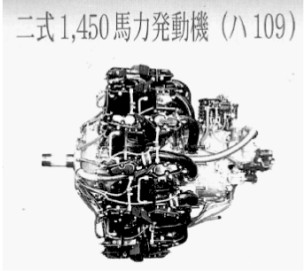
·Nakajima C-109”
-The Nakajima C-109, a double-row radial, delivered 1,450 CV.
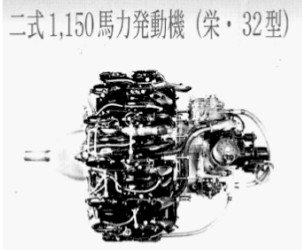
“Nakajima Sakae 32”
-The Sakae 32 gave 1,150 CV.
-A quasi-experimental Nakajima, equipped a few prototypes of the Fogoku (Mount Fuji) plane, a bomber capable of reaching the US from the nearest occupied islands. The engine did not turn out well due to its complexity.
-It was a double 18-cylinder-row engine, that is, 36 for 5,000 CV (is it the Nu-Go?). It was the Nakajima Ha-54 (Ha-505) model.

“Nakajima Ha-54”
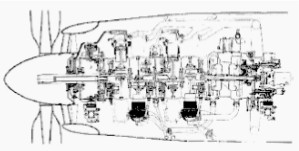
“Schematics for the four-row Ha-54”
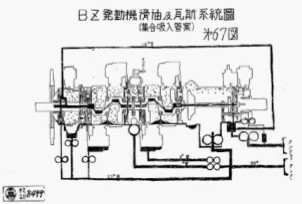
"Ha-54 oil circuit"
Engines of NAKAJIMA
Model: A
Arquitecture:
Cooling:
Total Displacement:
Bore / Stroke: x
Power:
Weight:
Model: BA
Arquitecture:
Cooling:
Total Displacement:
Bore / Stroke: x
Power:
Weight:
Model: Fugaba
Arquitecture:
Cooling:
Total Displacement:
Bore / Stroke: x
Power:
Weight:
Model: Ha 315-11, con ADI, 1360 CV
Arquitecture:
Cooling:
Total Displacement:
Bore / Stroke: x
Power:
Weight:
Model: Ha-1, -1b (Kotobuki, lic.G-R) Base Jupiter
Arquitecture:
Cooling:
Total Displacement:
Bore / Stroke: x
Power:
Weight:
Model: Ha-10
Arquitecture:
Cooling:
Total Displacement:
Bore / Stroke: x
Power:
Weight:
Model: Ha-100 (C-100)
Arquitecture:
Cooling:
Total Displacement:
Bore / Stroke: x
Power:
Weight:
Model: Ha-103, Mamori, 1870 CV
Arquitecture:
Cooling:
Total Displacement:
Bore / Stroke: x
Power:
Weight:
Model: Ha-104
Arquitecture:
Cooling:
Total Displacement:
Bore / Stroke: x
Power:
Weight:
Model: Ha-105, 2 tandem Ha-219
Arquitecture:
Cooling:
Total Displacement:
Bore / Stroke: x
Power:
Weight:
Model: Ha-107
Arquitecture:
Cooling:
Total Displacement:
Bore / Stroke: x
Power:
Weight:
Model: Ha-109 (C-109)
Arquitecture:
Cooling:
Total Displacement:
Bore / Stroke: x
Power:
Weight:
Model: Ha-11, (C1BI y BII) ?
Arquitecture:
Cooling:
Total Displacement:
Bore / Stroke: x
Power:
Weight:
Model: Ha-115, -C, -I, Sakae-23, -II Sakae 24
Arquitecture:
Cooling:
Total Displacement:
Bore / Stroke: x
Power:
Weight:
Model: Ha-117, derived friom Ha-103
Arquitecture:
Cooling:
Total Displacement:
Bore / Stroke:
Power:
Weight:
Model: Ha-140
Arquitecture:
Cooling:
Total Displacement:
Bore / Stroke: x
Power:
Weight:
Model: Ha-145, 2000 CV, Homare 10
Arquitecture:
Cooling:
Total Displacement:
Bore / Stroke: x
Power:
Weight:
Model: Ha-15
Arquitecture:
Cooling:
Total Displacement:
Bore / Stroke: x
Power:
Weight:
Model: Ha-17
Arquitecture:
Cooling:
Total Displacement:
Bore / Stroke: x
Power:
Weight:
Model: Ha-20, -20b
Arquitecture:
Cooling:
Total Displacement:
Bore / Stroke: x
Power:
Weight:
Model: Ha-201
Arquitecture:
Cooling:
Total Displacement:
Bore / Stroke: x
Power:
Weight:
Model: Ha-211
Arquitecture:
Cooling:
Total Displacement:
Bore / Stroke: x
Power:
Weight:
Model: Ha-214
Arquitecture:
Cooling:
Total Displacement:
Bore / Stroke: x
Power:
Weight:
Model: Ha-217, 3000 CV, derived from Ha-117+
Arquitecture:
Cooling:
Total Displacement:
Bore / Stroke:
Power:
Weight:
Model: Ha-219, 2420 CV, 18 cyl. radial
Arquitecture:
Cooling:
Total Displacement:
Bore / Stroke:
Power:
Weight:
Model: Ha-23
Arquitecture:
Cooling:
Total Displacement:
Bore / Stroke: x
Power:
Weight:
Model: Ha-25, Sakae
Arquitecture:
Cooling:
Total Displacement:
Bore / Stroke: x
Power:
Weight:
Model: Ha-32
Arquitecture:
Cooling:
Total Displacement:
Bore / Stroke: x
Power:
Weight:
Model: Ha-33
Arquitecture:
Cooling:
Total Displacement:
Bore / Stroke: x
Power:
Weight:
Model: Ha-34
Arquitecture:
Cooling:
Total Displacement:
Bore / Stroke: x
Power:
Weight:
Model: Ha-35
Arquitecture:
Cooling:
Total Displacement:
Bore / Stroke: x
Power:
Weight:
Model: Ha-39
Arquitecture:
Cooling:
Total Displacement:
Bore / Stroke: x
Power:
Weight:
Model: Ha-40
Arquitecture:
Cooling:
Total Displacement:
Bore / Stroke: x
Power:
Weight:
Model: Ha-41, (C-41) ?
Arquitecture:
Cooling:
Total Displacement:
Bore / Stroke: x
Power:
Weight:
Model: Ha-44
Arquitecture:
Cooling:
Total Displacement:
Bore / Stroke: x
Power:
Weight:
Model: Ha-45, -Homare
Arquitecture:
Cooling:
Total Displacement:
Bore / Stroke: x
Power:
Weight:
Model: Ha-46
Arquitecture:
Cooling:
Total Displacement:
Bore / Stroke: x
Power:
Weight:
Model: Ha-5, -Kai
Arquitecture:
Cooling:
Total Displacement:
Bore / Stroke: x
Power:
Weight:
Model: Ha-54
Arquitecture:
Cooling:
Total Displacement:
Bore / Stroke: x
Power:
Weight:
Model: Ha-60
Arquitecture:
Cooling:
Total Displacement:
Bore / Stroke: x
Power:
Weight:
Model: Ha-70
Arquitecture:
Cooling:
Total Displacement:
Bore / Stroke: x
Power:
Weight:
Model: Ha-8, Hikari (Bse Wright Whirlwind)
Arquitecture:
Cooling:
Total Displacement:
Bore / Stroke: x
Power:
Weight:
Model: Ha-9
Arquitecture:
Cooling:
Total Displacement:
Bore / Stroke: x
Power:
Weight:
Model: Ha-97. (C-97) (C-5B) ?
Arquitecture:
Cooling:
Total Displacement:
Bore / Stroke: x
Power:
Weight:
Model: Jupiter (Lic. G-R, ver Ha-1)
Arquitecture:
Cooling:
Total Displacement:
Bore / Stroke: x
Power:
Weight:
Model: Lorraine (Lic.)
Arquitecture:
Cooling:
Total Displacement:
Bore / Stroke: x
Power:
Weight:
Model: NAA, Lic. Jupiter VII, 350 CV 7 cils. radiales
Arquitecture:
Cooling:
Total Displacement:
Bore / Stroke: x
Power:
Weight:
Model: NAB, small 9 cyl. radial 200 CV
Arquitecture:
Cooling:
Total Displacement:
Bore / Stroke: x
Power:
Weight:
Model: NAC, 5-cyl. variant Jupiter VII.
Arquitecture:
Cooling:
Total Displacement:
Bore / Stroke: x
Power:
Weight:
Model: NAD, 5 NAB cylinders, 150 CV.
Arquitecture:
Cooling:
Total Displacement:
Bore / Stroke: x
Power:
Weight:
Model: NAE, 9 cyl. radial experimental, 600 CV. (1931)
Arquitecture:
Cooling:
Total Displacement:
Bore / Stroke: x
Power:
Weight:
Model: NAF, 9 cyl. radial similar NAE, 600 CV.
Arquitecture:
Cooling:
Total Displacement:
Bore / Stroke: x
Power:
Weight:
Model: NAH, Kotobuki Ha-1 base jupiter and P&W R-1340 (-3,-4,-4
Arquitecture:
Cooling:
Total Displacement:
Bore / Stroke: x
Power:
Weight:
Model: NAI, Experimental V12, 700 CV
Arquitecture:
Cooling:
Total Displacement:
Bore / Stroke: x
Power:
Weight:
Model: NAK, Mamori, radial 14 cyl.
Arquitecture:
Cooling:
Total Displacement:
Bore / Stroke: x
Power:
Weight:
Model: NAL, (Ha-5/a, -b y Kai) 14 cyl. radial
Arquitecture:
Cooling:
Total Displacement:
Bore / Stroke: x
Power:
Weight:
Model: NAM, (NK-1 Sakae Ha-25 de 950 CV. Base Gnome-Rhone
Arquitecture:
Cooling:
Total Displacement:
Bore / Stroke: x
Power:
Weight:
Model: NAN, Ha-107/-117. Hikari, 1900 and 2400 CV respect.
Arquitecture:
Cooling:
Total Displacement:
Bore / Stroke: x
Power:
Weight:
Model: NAP, Hikari 2, 3 (Ha-8 y 11) Base Wright Cyclone
Arquitecture:
Cooling:
Total Displacement:
Bore / Stroke: x
Power:
Weight:
Model: NAR, 1200 CV, first 18 cyl. radial (Ha-17)
Arquitecture:
Cooling:
Total Displacement:
Bore / Stroke: x
Power:
Weight:
Model: NAS, Experimental H-16, Base Mercury VIII, radial 9 cyl., 84
Arquitecture:
Cooling:
Total Displacement:
Bore / Stroke: x
Power:
Weight:
Model: NAT-1, Diesel 12 cils. inv. 700 CV
Arquitecture:
Cooling:
Total Displacement:
Bore / Stroke: x
Power:
Weight:
Model: NAU, 800 CV, air and water versions
Arquitecture:
Cooling:
Total Displacement:
Bore / Stroke: x
Power:
Weight:
Model: NAZ
Arquitecture:
Cooling:
Total Displacement:
Bore / Stroke: x
Power:
Weight:
Model: NBA
Arquitecture:
Cooling:
Total Displacement:
Bore / Stroke: x
Power:
Weight:
Model: NBD
Arquitecture:
Cooling:
Total Displacement:
Bore / Stroke: x
Power:
Weight:
Model: NBH
Arquitecture:
Cooling:
Total Displacement:
Bore / Stroke: x
Power:
Weight:
Model: Ne-130
Arquitecture:
Compressor/s:
Combustion chambers:
Turbines:
Power / Thrust: / ---
Weight:
Model: Ne-20
Arquitecture:
Compressor/s:
Combustion chambers:
Turbines:
Power / Thrust: / ---
Weight:
Model: Ne-230
Arquitecture:
Compressor/s:
Combustion chambers:
Turbines:
Power / Thrust: / ---
Weight:
Model: Ne-30
Arquitecture:
Compressor/s:
Combustion chambers:
Turbines:
Power / Thrust: / ---
Weight:
Model: Ne-330
Arquitecture:
Compressor/s:
Combustion chambers:
Turbines:
Power / Thrust: / ---
Weight:
Model: NK-1, -4, -9, -11
Arquitecture:
Cooling:
Total Displacement:
Bore / Stroke: x
Power:
Weight:
Model: NLH, Experimental W-18 (Ha-39) con 2000 CV
Arquitecture:
Cooling:
Total Displacement:
Bore / Stroke: x
Power:
Weight:
Model: NWB, V12, 650 CV
Arquitecture:
Cooling:
Total Displacement:
Bore / Stroke:
Power:
Weight:
Model: NWB-Kai, 720 CV (8-Shi)
Arquitecture:
Cooling:
Total Displacement:
Bore / Stroke: x
Power:
Weight:
Model: NWE, W-18 (Ha-15) 1600 CV
Arquitecture:
Cooling:
Total Displacement:
Bore / Stroke: x
Power:
Weight:
Model: Serie Hikari -1 al -3 (Hikori? = no)
Arquitecture:
Cooling:
Total Displacement:
Bore / Stroke: x
Power:
Weight:
Model: Serie Homare (Honor) (NK-9..)
Arquitecture:
Cooling:
Total Displacement:
Bore / Stroke: x
Power:
Weight:
Model: Serie Kasei (Marte) (NK-4..)
Arquitecture:
Cooling:
Total Displacement:
Bore / Stroke: x
Power:
Weight:
Model: Serie Kotobuki (varias series)
Arquitecture:
Cooling:
Total Displacement:
Bore / Stroke: x
Power:
Weight:
Model: Serie Mamoru (Protector)
Arquitecture:
Cooling:
Total Displacement:
Bore / Stroke: x
Power:
Weight:
Model: Serie Mamoru-Kai
Arquitecture:
Cooling:
Total Displacement:
Bore / Stroke: x
Power:
Weight:
Model: Serie Sakae (Prosperidad) (NK-1..)
Arquitecture:
Cooling:
Total Displacement:
Bore / Stroke: x
Power:
Weight:
Model: Serie Zuisei
Arquitecture:
Cooling:
Total Displacement:
Bore / Stroke: x
Power:
Weight:
Model: Showa
Arquitecture:
Cooling:
Total Displacement:
Bore / Stroke: x
Power:
Weight:
Model: TR-10
Arquitecture:
Compressor/s:
Combustion chambers:
Turbines:
Power / Thrust: / ---
Weight:
Model: TR-12
Arquitecture:
Compressor/s:
Combustion chambers:
Turbines:
Power / Thrust: / ---
Weight:
Model: TR-12b
Arquitecture:
Compressor/s:
Combustion chambers:
Turbines:
Power / Thrust: / ---
Weight:
Model: TSU-11, motorjet (+Hitachi)
Arquitecture:
Compressor/s:
Combustion chambers:
Turbines:
Power / Thrust: / ---
Weight:
Model: Type 100, Army
Arquitecture:
Cooling:
Total Displacement:
Bore / Stroke: x
Power:
Weight:
Model: Type 2, Army
Arquitecture:
Cooling:
Total Displacement:
Bore / Stroke: x
Power:
Weight:
Model: Type 4, Army
Arquitecture:
Cooling:
Total Displacement:
Bore / Stroke: x
Power:
Weight:
Model: Type 97, Army
Arquitecture:
Cooling:
Total Displacement:
Bore / Stroke: x
Power:
Weight:
Model: Type 99, Army
Arquitecture:
Cooling:
Total Displacement:
Bore / Stroke: x
Power:
Weight:
Model: WA, Primer Nakajima original.
Arquitecture:
Cooling:
Total Displacement:
Bore / Stroke: x
Power:
Weight:


